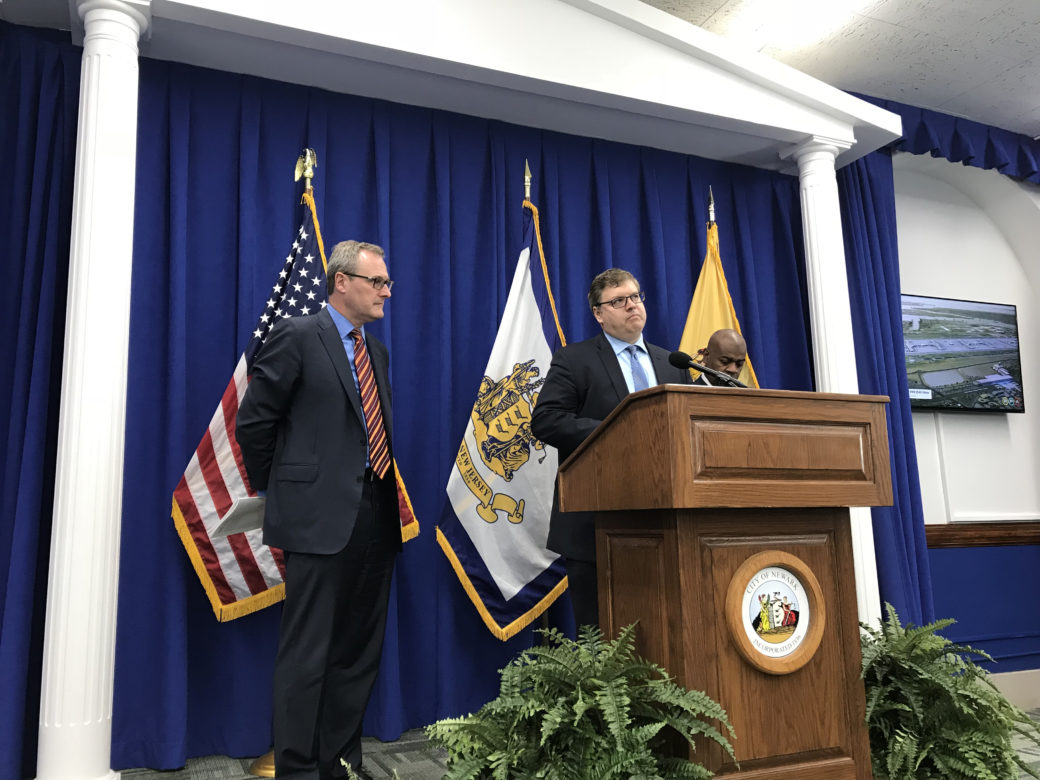Today we released our newest report, “Upgrading to World Class - The Future of the Region’s Airports Revisited,” alongside Mayor Ras Baraka, to call attention to the investments needed to bring our airports up to the level that befits one of the world’s largest regional economies.
A thriving regional economy depends on airports that work. That means passengers can get to and from airports with ease, flights leave relatively on-time, and there is enough capacity for commercial air traffic, cargo, and private business jets.
The problem is, our region’s airports are increasingly not living up to those standards. Rising numbers of passengers without an increase in capacity have led to Newark Liberty International (EWR), LaGuardia (LGA) and John F. Kennedy International (JFK) ranking 1st, 3rd, and 4th for having the worst delays in the nation.
These airports are also increasingly challenging to reach. As the number of passengers rise, and with most still accessing the airports by private car or on-demand vehicle, traffic delays plague travelers. JFK and LGA have mitigated this somewhat by investing in more robust transit connections, with JFK reaping greater gains with the addition of an Airtrain that connects with the subway and commuter rail, and LGA seeing lesser but still significant gains with the addition of two Select Bus Service lines. But there is still much room for improvement.
And finally, climate change threatens many of our region’s airports, including the three largest. But none will be as hard-hit as Teterboro. By late this century, the region is expected to see three feet of sea level rise. This will leave Teterboro airport inundated. TEB served over 167,000 aircraft in 2016, the region needs to begin planning now for how to transition these planes, since it will likely put additional stresses on the big three airports which are already constrained.
At today’s event Mayor Baraka highlighted the importance of Newark Airport to the City of Newark’s economic resurgence. The City of Newark is also soon to begin a community planning process to think about the future of the neighborhoods closest to the airport.

“Newark International Airport is already a major driver of Newark’s exponential growth in economic development and jobs,” says Mayor Baraka. “The airport’s success has created the need for a serious makeover to make it more convenient, user-friendly and accessible. The Regional Plan Association’s proposals for better transit connections, increased capacity and preparations for climate change reinforce the City of Newark’s efforts to create an airport second to none.”
Our president Tom Wright echoed the mayor’s sentiments, stressing the the difficulty for air travelers getting to and from our region’s airports. “We need to invest to build a modern airport system for our growing region,” he said. “This includes expanding runway capacity, providing transit connections, and continuing to improve the customer experience.”
“As part of our research we looked at what cities around the world are doing to make their airports work better for passengers. London has repeatedly invested in upgrading transit connections to Heathrow. They’re also about to embark on an ambitious expansion of that airport,” says RPA Vice President of Transportation Rich Barone. “We need to continue to innovate to keep up with other global cities.”
RPA’s new report calls for upgrades to the regions airports at an annual investment of $1.5 billion to achieve the following:
New capacity: two new runways at JFK and one new runway at Newark
Better transit connections: improved Airtrain and a new one-seat ride rail service to JFK, a new front-door for Newark Airport which would give passengers seamless access to the airport from PATH, NJTransit and Amtrak, and an Airtrain alignment for LGA that would allow for connection to the #7 line at Willets Point as well as LIRR.
Increased preparation for climate change and sea level rise: beginning to plan now for the eventual phasing out Teterboro Airport, which is likely to be partially flooded at one foot of sea level rise (predicted by 2050) and fully flooded at three feet of sea level rise (predicted to by the end of the century or sooner), and reinforcing efforts to protect the other airports from both sea level rise and storm surge.
This report was developed as part of RPA’s Fourth Regional Plan, its long-term vision for the New York-New Jersey-Connecticut metropolitan area.
Click here to view the full report.
Click here for graphics from the report.
